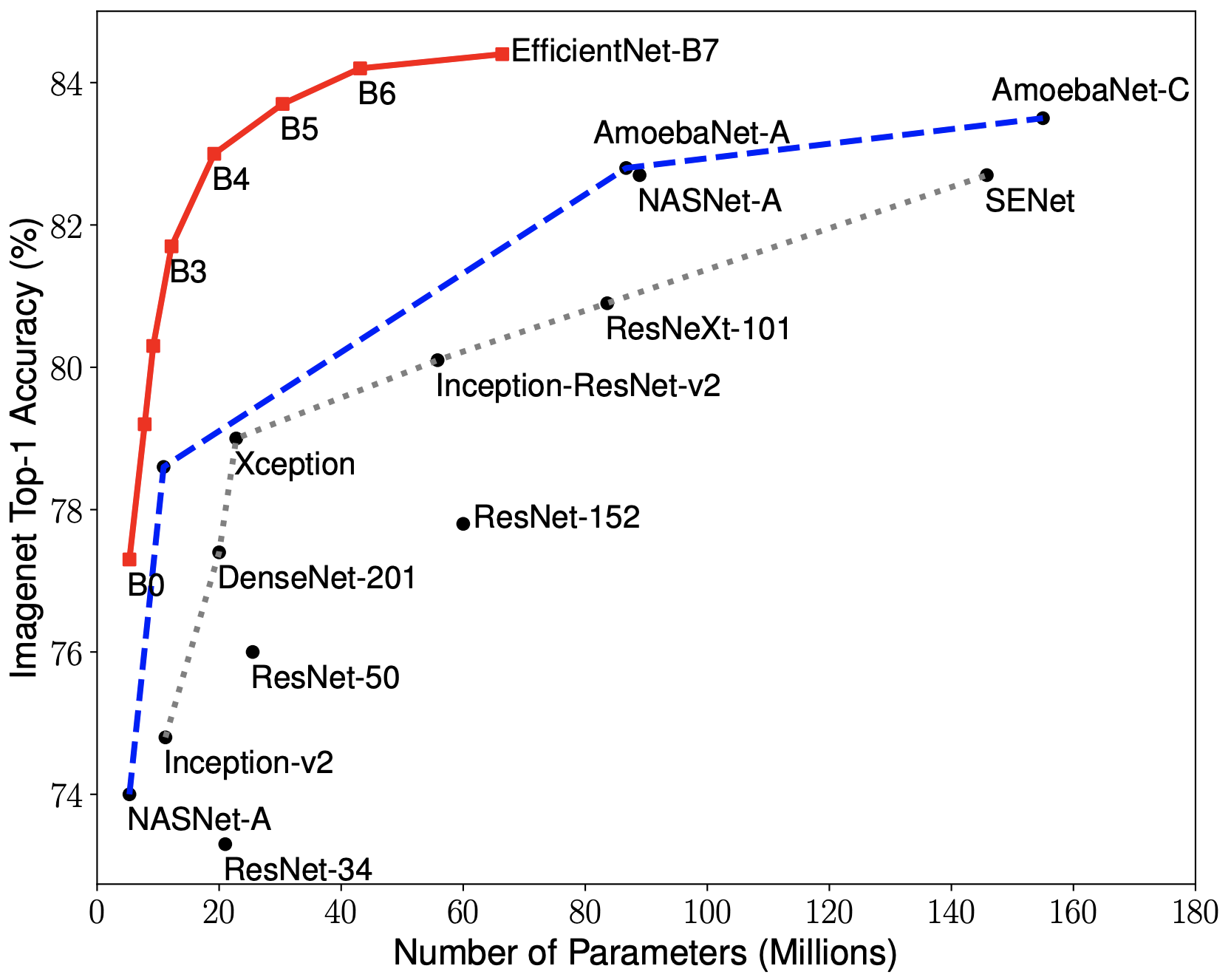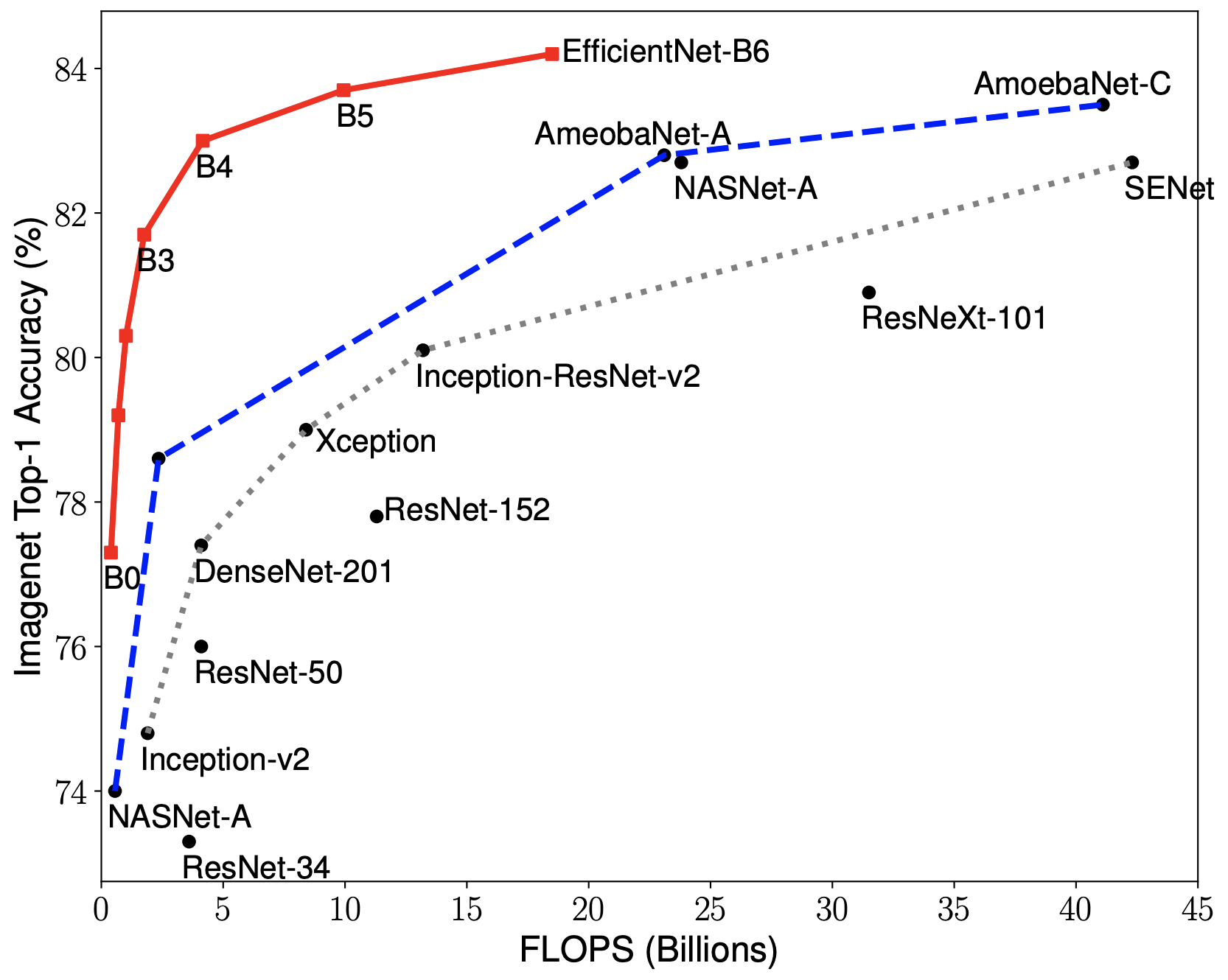Package Exports
- node-efficientnet
This package does not declare an exports field, so the exports above have been automatically detected and optimized by JSPM instead. If any package subpath is missing, it is recommended to post an issue to the original package (node-efficientnet) to support the "exports" field. If that is not possible, create a JSPM override to customize the exports field for this package.
Readme
TensorflowJS EfficientNet
Under Construction 👷 currently supporting only B0 checkpoint
This repository contains a nodeJs wrapper of EfficientNet, a lightweight convolutional neural network architecture achieving the state-of-the-art accuracy with an order of magnitude fewer parameters and FLOPS, on both ImageNet and five other commonly used transfer learning datasets.
The codebase is heavily inspired by the TensorFlow implementation.
Table of Contents
Installation
npm i --save node-efficientnetExamples
import * as fs from 'fs';
import * as nodeFetch from 'node-fetch';
import {
EfficientnetCheckPointFactory,
EfficientnetCheckPoint,
EfficientnetModel,
EfficientnetResult
} from "node-efficientnet"
const images = ['car.jpg', 'panda.jpg']
const imageDir = "./samples"
const imageDirRemoteUri = "https://raw.githubusercontent.com/ntedgi/node-efficientnet/main/samples"
if (!fs.existsSync(imageDir)) {
fs.mkdirSync(imageDir);
}
async function download(image: string, cb: fs.NoParamCallback) {
const response = await nodeFetch.default(`${imageDirRemoteUri}/${image}`);
const buffer = await response.buffer();
fs.writeFile(`${imageDir}/${image}`, buffer, cb)
}
EfficientnetCheckPointFactory.create(EfficientnetCheckPoint.B0)
.then((model: EfficientnetModel) => {
images.forEach(async (image) => {
await download(image, () => {
model.inference(`${imageDir}/${image}`).then((result: EfficientnetResult) => {
console.log(result.result)
})
})
})
})
.catch((e: Error) => {
console.error(e)
})output :
[
{ label: 'sports car, sport car', precision: 88.02440940394301 },
{
label: 'racer, race car, racing car',
precision: 6.647441678387659
},
{ label: 'car wheel', precision: 5.3281489176693295 }
]
[
{
label: 'giant panda, panda, panda bear, coon bear, Ailuropoda melanoleuca',
precision: 83.60747593436018
},
{ label: 'skunk, polecat, wood pussy', precision: 11.61300759424677 },
{
label: 'hog, pig, grunter, squealer, Sus scrofa',
precision: 4.779516471393051
}
]
About EfficientNet Models
EfficientNets rely on AutoML and compound scaling to achieve superior performance without compromising resource efficiency. The AutoML Mobile framework has helped develop a mobile-size baseline network, EfficientNet-B0, which is then improved by the compound scaling method to obtain EfficientNet-B1 to B7.

|

|
EfficientNets achieve state-of-the-art accuracy on ImageNet with an order of magnitude better efficiency:
In high-accuracy regime, EfficientNet-B7 achieves the state-of-the-art 84.4% top-1 / 97.1% top-5 accuracy on ImageNet with 66M parameters and 37B FLOPS. At the same time, the model is 8.4x smaller and 6.1x faster on CPU inference than the former leader, Gpipe.
In middle-accuracy regime, EfficientNet-B1 is 7.6x smaller and 5.7x faster on CPU inference than ResNet-152, with similar ImageNet accuracy.
Compared to the widely used ResNet-50, EfficientNet-B4 improves the top-1 accuracy from 76.3% of ResNet-50 to 82.6% (+6.3%), under similar FLOPS constraints.
Models
The performance of each model variant using the pre-trained weights converted from checkpoints provided by the authors is as follows:
| Architecture | @top1* Imagenet | @top1* Noisy-Student |
|---|---|---|
| EfficientNetB0 | 0.772 | 0.788 |
| EfficientNetB1 | 0.791 | 0.815 |
| EfficientNetB2 | 0.802 | 0.824 |
| EfficientNetB3 | 0.816 | 0.841 |
| EfficientNetB4 | 0.830 | 0.853 |
| EfficientNetB5 | 0.837 | 0.861 |
| EfficientNetB6 | 0.841 | 0.864 |
| EfficientNetB7 | 0.844 | 0.869 |
* - topK accuracy score for converted models (imagenet val set)